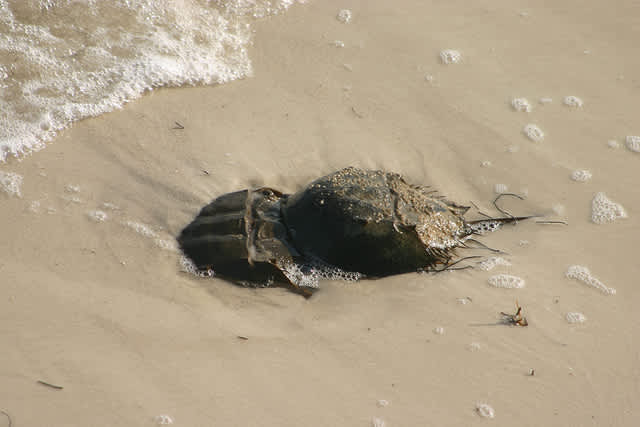Florida Beachgoers Can Help Biologists Monitor Spawning Horseshoe Crabs
OutdoorHub 03.18.12

As spring arrives, horseshoe crabs converge along sandy beaches throughout the state to mate. Biologists with the Florida Fish and Wildlife Conservation Commission (FWC) are asking the public for help pinpointing the sites where these horseshoe crabs spawn.
Beachgoers are likely to have the best luck spotting mating horseshoe crabs around high tide, just before, during or after a full or new moon. The conditions around the new moon on March 22 and the full moon on April 6 will create ideal opportunities to view the spawning behavior of horseshoe crabs.
The FWC asks people to report sightings through one of several convenient options. Go to MyFWC.com/Contact and click on the “Submit a Horseshoe Crab Survey” link, then “Florida Horseshoe Crab Spawning Beach Survey.” You can also email findings to horseshoe@MyFWC.com or call the FWC at 866-252-9326.
Observers should note the number of horseshoe crabs they see and whether those horseshoe crabs are mating. Mating crabs “pair up,” with the smaller male on top of the larger female. Other male crabs may be present around the couple. If possible, the observer should specify roughly how many horseshoe crabs are mating adults and how many are juveniles (4 inches wide or smaller).
Biologists also want to know the date, time, location, habitat type and environmental conditions – such as tides and moon phase – when a sighting occurs.
Through December 2011, the FWC has received 2,350 reports since the survey program began in April 2002.
Horseshoe crabs, often called “living fossils,” have been around for approximately 450 million years and are an important part of a marine ecosystem. Their eggs are a vital food source for animals and birds, such as the red knot.
Horseshoe crabs are important to humans as well. In the biomedical industry, horseshoe crab blood helps save human lives. Pharmaceutical companies use horseshoe crab blood to make sure that intravenous drugs and vaccine injections are bacteria-free. Also, research into horseshoe crab eyes has given scientists a greater knowledge of the functioning of human eyes.

